A Conversation With Alma Har’el (BOMBAY BEACH)
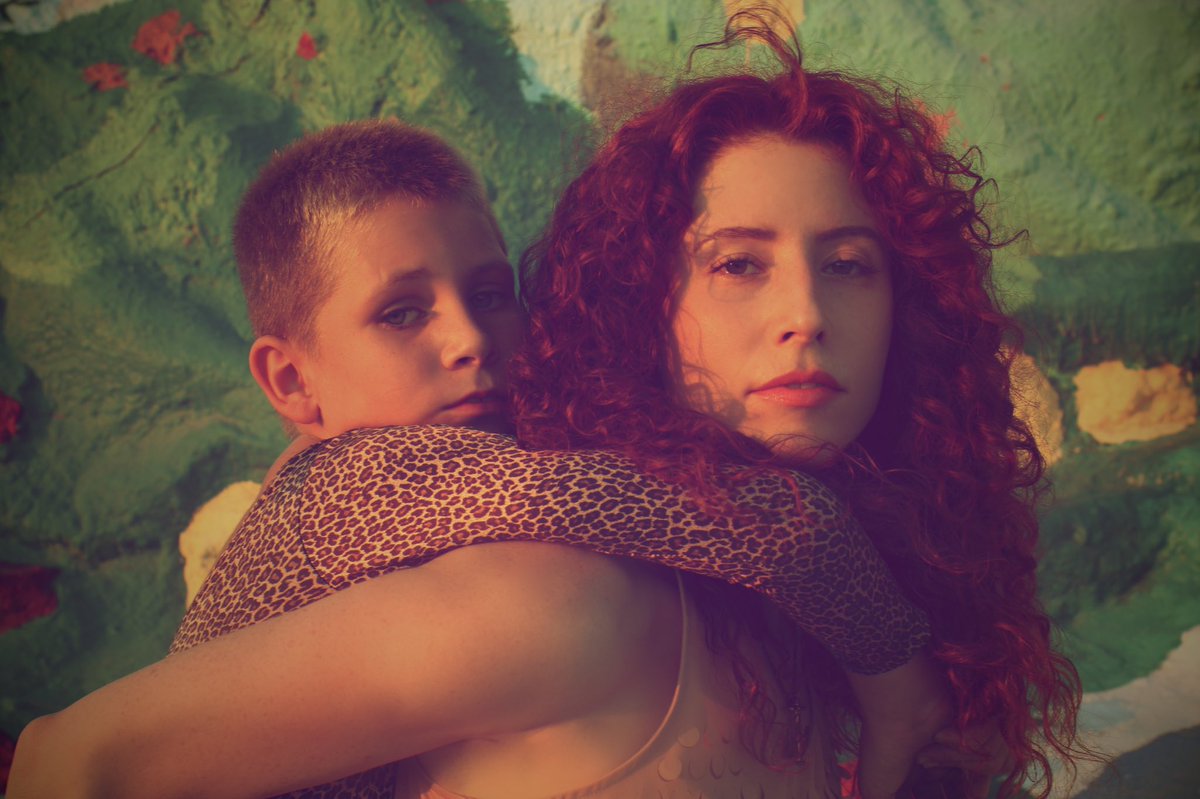
(Bombay Beach opens theatrically in New York City on Friday, October 14, 2011. Visit the film’s official website to learn more. NOTE: This conversation was first posted on April 21, 2011.)
Thinking of a series of dreams
Where the time and the tempo fly
And there’s no exit in any direction
Except the one that you can’t see with your eyes
Wasn’t making any great connection
Wasn’t falling for any intricate scheme
Nothing that would pass inspection
Just thinking of a series of dreams — Bob Dylan
Israeli-born Alma Har’el’s first feature film, Bombay Beach, premiered at the Berlin International Film Festival this past winter to quiet but consistent accolades, and will have its American premiere in competition at the Tribeca Film Festival in New York this week (April 20-May 1, 2011). Shot in the surreal environs of the Salton Sea, a man-made body of water that sits in the middle of the California desert, the film itself has plenty of surreal aspects of its own. It is, in certain respects, a recognizable vérité piece about several people who inhabit the seaside town of Bombay Beach and nearby community of Slab City. But Har’el is also an award-winning music video director and so has collaborated with her subjects to tell part of their stories in sequences where they interpret their lives through dance, accompanied by the haunting voice and horn of Zach Condon of the band Beirut. In an article for New York Magazine in 2006, a very young (and exceedingly stage-frightened) Condon said of his music, “It’s impossible for me to play these songs and not feel joy.” It’s impossible to listen to them without experiencing loads of it, as well. The film also contains some musical selections from an upstart named Bob Dylan.
Bombay Beach is a tremendously moving piece of cinema—human scale, intimate and warm—with gorgeous cinematography by Har’el, and tender and playful dance sequences choreographed by Paula Present, a long-time collaborator of the director.
A couple of weeks after the film’s début in Berlin, I had a chance to speak to Har’el via Skype at her home in Los Angeles about the magical encounters she experienced in making this piece of work. And meeting and befriending an extraordinary little boy named Benny Parrish:
Hammer to Nail: Without any confines of traditional documentary storytelling, you went about making Bombay Beach in a very low-key way, working intuitively and almost completely on your own. What are you learning about this film from audiences who are now sharing with you what they think about this unique collaboration that took place between you and your subjects?
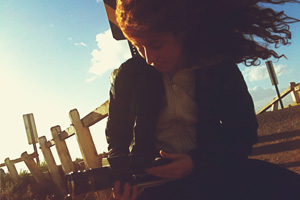 Alma Har’el: I find myself quieting down quite a bit and listening intently to what people have to say. And in doing that, it’s allowing me to learn about what it was I did do exactly. Because I’m not really sure what that was. [laughter] It brings me a bit closer to understanding the film.
Alma Har’el: I find myself quieting down quite a bit and listening intently to what people have to say. And in doing that, it’s allowing me to learn about what it was I did do exactly. Because I’m not really sure what that was. [laughter] It brings me a bit closer to understanding the film.
H2N: What led you to focus your efforts on these extraordinary protagonists; how did you go about establishing such intimacy and trust with them?
AH: Several years ago, very early on in my career, I worked for National Geographic, doing an interview show for them about the Middle East. At the time I was a TV presenter, hosting a music show on Israeli television. When the National Geographic people offered me this presentation job, I told them I would only do it if I could also direct. And they agreed.
A man with a high position there came to talk to our crew and he said something that has really stuck with me. He was talking, in particular, about interviewing techniques and how to talk to people for the camera. Mostly people will just show you what they want you to see, the story that everybody sees. If you’re good, you might get to see some of their personal lives. And, once in a while, you might get to see their secret lives. The way he explained all this, I got the distinct feeling from how and what he told us, that you were supposed to steal these secrets, almost without them knowing. I knew he was right, that that’s what makes it interesting. But instinctually I didn’t really relate to it at all. There was something about it that didn’t click.
Back then, I don’t think I really knew what intimacy was, but during the making of this film, I understood that I didn’t want to steal anything from these people. I wanted to reach a state of intimacy with them that was genuine and to be honest about what I wanted to do. Although neither did I want to completely ruin the magic of discovering things together by explaining too much. The trust and intimacy was a process and the friendships grew as I continued to film with them. We would do creative things together or I would help them out with certain things. It was really special. But saying that reduces the process, somehow, since I’m sure most documentary filmmakers experience that in one way or another. But I think doing those creative things together gave them insight into what I was trying to do, making me less “the enemy behind the camera” who was trying to steal things from them, and more like a collaborator.
H2N: It seemed to me that these people, considering where and how they live, don’t have that much to occupy their time and attention, making it a ripe situation for someone like you to come in and orchestrate something extraordinary—the dance numbers on the beach, the ways in which they can express themselves verbally, storytelling about their lives. But there’s also a huge capacity to play and invent and break out of difficult existences. They are playful; they do dance around; they do sit around and ponder things deeply. You tapped into something intuitively that you must have recognized, which is to say that that childlike ability to improvise and play is still very much innate, perhaps because of the lack of other things to do. The strong creative aspect is still very much on the surface and not buried under more, let’s say, “sophisticated” ways in which we entertain ourselves.
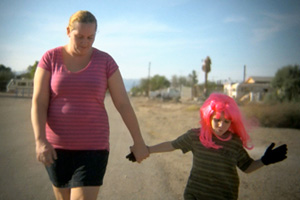 AH: This is the very thing I picked up on when I first came to that place. I first went there to do a music video with Beirut and Zack Condon [their video, entitled, The Concubine, was shot partly on location in Bombay Beach in 2009]. That’s Mike [Parrish] Jr., Benny’s older brother, who stars in that video. You can also see Pamela doing the dishes and Benny and Sarah, as well, appear briefly.
AH: This is the very thing I picked up on when I first came to that place. I first went there to do a music video with Beirut and Zack Condon [their video, entitled, The Concubine, was shot partly on location in Bombay Beach in 2009]. That’s Mike [Parrish] Jr., Benny’s older brother, who stars in that video. You can also see Pamela doing the dishes and Benny and Sarah, as well, appear briefly.
It was really hard to find the time to do this video and it was getting a bit frustrating, so I decided to go do a random location scout. A friend of mine told me about this desolate Salton Sea area. The first time we went there, I became so intrigued by the place, I had to go back the very next day. California was the place I learned to drive since I never learned in Israel. Being a really nervous driver, I never took the freeway; it just terrified me. I couldn’t do it. But I had to learn how to drive on the freeway to get to Salton Sea.
One of the first things that impressed me was just what you were speaking about—this direct connection to childhood. I met these kids, the Parrishes and their friends, at the beach when we shot the music video. They invited me into their house. And even though my family and my experience is so different, there was something about the easy access of this mode you can get into when you’re a child. Your perspective is really limited to the world in which you’re growing up. You don’t yet have any context to who you are, your country, where you live, your social demographic, or what have you. In a way, you’re in the most accepting place in terms of your family.
I know many children are not like that. CeeJay [one of the film’s three main protagonists, a black teenager who moved to the area to live with his father shortly after his young cousin was gunned down in a gang-related incident in LA] is an example of that; he certainly has perspective on his family and where he comes from and he definitely has judgments about all that. He knew he wanted something different at a very early age, wanted to be the first of his family to go to college, and definitely did not want to be part of the violence he grew up with all around him. He has a lot of criticism for his family and the way they live their lives.
Opposing that, the Parrish kids and their parents are more romantic when it comes to their feelings about family. No matter what happens, as a family, you hold on to this cohesive unit and infuse it with love all the time, into every relationship, even if they’re not so great or they’re dysfunctional. But there is romance about life and a focus on what they do have together. I also didn’t really want to know anything about the Salton Sea, the place itself, its history. I wanted to feel like one of the kids, more like how Benny feels about the place, this sea he lives beside with all the dead fish. But the beach is a fun place, a place where you go swimming, “when you want to be happy,” as he says in the film. When we remember our childhoods—at least when I do—we forget the “in-between” stuff and only very certain specific things remain in our memories. I wanted to experience that with them in this place that feels like it’s outside of time.
H2N: The way in which a lot of the scenes were shot did make it seem like you were on some abandoned movie set. It did very much feel like a place unattached to the rest of the world, a universe unto itself. In my opinion, you really could have foregone the bit of archival info we learn at the beginning of the film about this place. While it’s interesting and the footage is delightfully kitschy, it’s really not that relevant to the stories you tell about the people living there. The dance numbers you stage with your protagonists, however, do feel quite organic; they might spring up out of nowhere at any given moment. It’s such a lovely, non-verbal way they’re able to express their feelings for one another. That’s one of cinema’s strengths, and, perhaps, why people love the music video format so much.
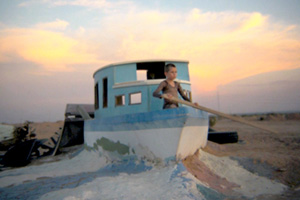 AH: Making this film was a real process for me and that includes discovering these various story arcs. I just landed in that place and decided to make a film, not knowing what I would find. I knew I wanted to do something magical, with dance sequences, in this place. When I moved there, I didn’t have any subjects. I met CeeJay once in the street and met the Parrish family while shooting the video for Zach. So when I got there, I just called them up and started to hang out with them. I lived in Indio [a desert community in the Coachella Valley, about one hour’s drive from Salton Sea] for four or five months and drove back and forth every day—on the freeway.
AH: Making this film was a real process for me and that includes discovering these various story arcs. I just landed in that place and decided to make a film, not knowing what I would find. I knew I wanted to do something magical, with dance sequences, in this place. When I moved there, I didn’t have any subjects. I met CeeJay once in the street and met the Parrish family while shooting the video for Zach. So when I got there, I just called them up and started to hang out with them. I lived in Indio [a desert community in the Coachella Valley, about one hour’s drive from Salton Sea] for four or five months and drove back and forth every day—on the freeway.
Very early on in the process, I started editing as I was shooting. I’d edit and then I’d go back every few weeks to shoot more. This was my process for over a year—edit, go back, edit, go back. So even then, I was weaving the stories together as I was shooting them. I also knew where I wanted the dance sequences to be, based on what I was shooting. For example, there is the scene where a group of older kids are making fun of Benny, telling him he can’t participate in their games because he has “no class,” leaving him out completely. Then they went outside and played with those carts that later became a part of that dance sequence. After editing that scene together, the choreographer, Paula Present, and I rehearsed with them at the community center and we had them wear the same clothes that they wore that day and shot it over two days at the same time of day. So it really looks like they just stepped out to play and then started to dance.
The gazebo dance with CeeJay and his girlfriend was shot more like a real scene, although a lot of their dialogue was improvised. I record everything with lav mics so I don’t really have to be that close to them all the time; I can just film and let them talk in a more intimate way. We were just finding things as we were going along.
H2N: There is a real sense of discovery. The structure of your film has all of these interwoven story arcs where we follow different protagonists. We intuit they know of one another, yet in the film, their lives really don’t intersect. But, for me, the spine of this piece is Benny’s story, specifically the story of his “illness and treatment.” You have portrayed one of this country’s many drug-addicted children in such a pure way and I connected to him so viscerally. I can honestly say that my emotional attachment to this kid stemmed mostly from his victimization from a negligent medical establishment, something that enrages me like very few other things do. The doctors’ and caregivers’ solutions to making Benny “better” is to bombard him with more medications and higher dosages until his poor little body and mind are malfunctioning. You documented this deterioration over the course of the time you were shooting. Obviously, you didn’t set out to make any kind of hard-hitting social issue statement about anything, but that’s the real beauty and artistry of the film. The way in which it’s edited, however, very much drives home certain points about what has happened and is happening to these people and how they cope.
AH: Yes, and the solutions that they’re offered. I was very aware of all of this while it was happening. It was, and still is, something I deal with every day—how to react to it, how to be supportive of the situation. I try to provide as much information as I can that might help. But that’s as much as I feel I can do. It’s tricky as a filmmaker and it’s tricky as a human being. The people around Benny are doing what they think is the best thing to do. Bluntly, the truth is that that area is notorious for lots of doctors that are practicing there that have, let’s say, failed elsewhere. There are a lot of doctors and health care people in that area who are in training, just starting practices. They don’t necessarily have the right information or attitude and the “expertise” they can offer is limited in many ways.
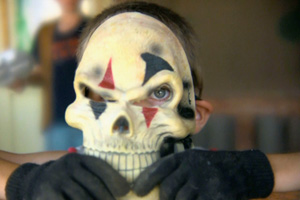 It’s particularly enraging, because to me, Benny is not only smart, he’s probably one of the most interesting people I’ve ever met in my entire life. His spirit and imagination I would like to think will be stronger than anything that’s happening to him physiologically. The only hope is that he won’t be damaged by all of this forever. These people really do play a kind of Russian roulette with these kids’ brains. It is unbelievable that they give those drugs to kids that age. He’s been receiving them since he was four. The amounts increase, the medications change, and the definition of “bi-polar,” which is what he’s diagnosed with—well, you can’t say that a kid has a bi-polar disorder. That kind of condition is only diagnosable in adults according to the DSM-IV [Diagnostic and Statistical Manual of Mental Disorders]. There’s no such thing as a bi-polar condition in children. They impose that diagnosis because they don’t know what else to call it. They might say, “Well, this is where we think it’s going,” and start doing drug trials. They’re experimenting and don’t really know the outcomes.
It’s particularly enraging, because to me, Benny is not only smart, he’s probably one of the most interesting people I’ve ever met in my entire life. His spirit and imagination I would like to think will be stronger than anything that’s happening to him physiologically. The only hope is that he won’t be damaged by all of this forever. These people really do play a kind of Russian roulette with these kids’ brains. It is unbelievable that they give those drugs to kids that age. He’s been receiving them since he was four. The amounts increase, the medications change, and the definition of “bi-polar,” which is what he’s diagnosed with—well, you can’t say that a kid has a bi-polar disorder. That kind of condition is only diagnosable in adults according to the DSM-IV [Diagnostic and Statistical Manual of Mental Disorders]. There’s no such thing as a bi-polar condition in children. They impose that diagnosis because they don’t know what else to call it. They might say, “Well, this is where we think it’s going,” and start doing drug trials. They’re experimenting and don’t really know the outcomes.
But this film can only serve to show glimpses into some of the larger issues one can pick out from these people’s lives and the way in which they live their lives in this particular place. All these things that can be perceived as wrong or right, or bad or good, all reside together, side by side. This is the human experience of life and that’s what I wanted to illustrate more than anything, how things co-exist, all the wrongs and the rights together, the love and the violence, the broken dream and the persistence of dreams. I hope the film gives a feeling of a more rounded feeling of life, not something dissected into pieces. I don’t want to say if this certain thing or that certain thing was remedied everything would be okay. I don’t believe in that. Benny’s predicament is one heartbreaking element of everything else going on. As a friend, I intend to do what I can do to educate and help with things. But as a filmmaker, this is what I’m interested in illustrating.
My stance is not one of criticism for films that are more blatantly “social issue” films. I watch those, too, and learn from them and think they’re so important. But the film I made didn’t have room to supply that kind of information; that’s not what I set out to do. Going back to the context of the place itself: up until the last minute, there was a debate on whether we should include the introduction that is there—the history of the Salton Sea and the genesis of this place. I think the film would have been fine without that, too, because, in essence, not knowing where you are doesn’t matter. But it does, of course, give context to this idea of the broken American dream.
Red and CeeJay and the Parrishes all have so much to do with this kind of mythology for me. I have only experienced this “American Dream” from afar as anyone who isn’t from this place does. As I’ve gotten closer, I still see the “football dream,” the “success dream,” where one is lifted from your environment into a new destiny. Red is the traveler, the seeker, who worked in the oil fields. He represents the loner with deep wisdom smattered with that deep-seated racism that has been handed down to him from older generations. There’s Mike Parrish’s fantasy of being in the military, the obsession with guns and explosives as a form of entertainment, the love for family in a straightforward and honest way. All of this is so evocative of America—or, this lost America, more accurately. Even though the dream is broken, you can still see the people. And in terms of the place itself, it’s like when you see an old woman: you know she used to be beautiful and vibrant and it gives her another dimension, not because it makes her tragic, but because it makes her heroic. It moves her from being an object of beauty to being a subject with depth and history. That place, for me, is redolent of that, a place sold to people as a dream. And now it’s a place where you can meet yourself in a real way, a grounded way, and there’s beauty in that, too. Because the only thing that’s left is the intimacy you can have with the other people who are there with you.
H2N: Your collaboration with Condon provides a really lovely ingredient in all this, his voice and horn so evocative of something both melancholy and joyful.
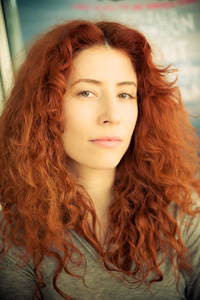 AH: That sound is how I feel when I’m honest about my life, that juxtaposition of melancholy and loneliness with the absolute enjoyment and happiness of being alive. Ever since the first time I heard his music and his voice, it’s been such an influence and there are always wonderful surprises along the way. I feel like that when I’m around him, when we work together. We collaborated for three or four years doing all these music videos. I started feeling a bit tied down to that form. I did videos for other artists and just didn’t feel that inspiration, that spark or connection with other musicians as much as I did with him. I wrote him an email at one point telling him I needed to do my thing, that the music video work was limiting for me at that point and that I had found something I wanted to make a film about. I told him I would love it if he did the music. I sent him the scene with Benny and Pamela and the pink wig at the beach, which was one of the first things I shot, and based on that scene, he started making music for the film.
AH: That sound is how I feel when I’m honest about my life, that juxtaposition of melancholy and loneliness with the absolute enjoyment and happiness of being alive. Ever since the first time I heard his music and his voice, it’s been such an influence and there are always wonderful surprises along the way. I feel like that when I’m around him, when we work together. We collaborated for three or four years doing all these music videos. I started feeling a bit tied down to that form. I did videos for other artists and just didn’t feel that inspiration, that spark or connection with other musicians as much as I did with him. I wrote him an email at one point telling him I needed to do my thing, that the music video work was limiting for me at that point and that I had found something I wanted to make a film about. I told him I would love it if he did the music. I sent him the scene with Benny and Pamela and the pink wig at the beach, which was one of the first things I shot, and based on that scene, he started making music for the film.
H2N: This bond, this relationship between Benny and his mom, is the absolute heart of this film. She really is his only friend. The parent/child relationship is so often portrayed as one of antagonism and strife these days.
AH: I agree with you and I also deeply appreciate the deepness of their bond. It’s a very honest, but very kind relationship. She’s a mom that has energy and space left to explore the good parts of her children. She loves being a mother. She also feels frustrated and, in a lot of ways, stuck on certain things but she wants her children to have what she doesn’t, which is also something very much a part of the American character, to make sure your children might have a different destiny than the one of the generation before. That’s universal, of course, but the reward of that seems to be higher in people’s fantasies here.
But despite her high hopes for her kids, she’s still the one who gives Benny his medication, insists on it, making sure he takes everything the doctors give him. Pamela does have a lot of problems dealing with his behavior and controlling it. He takes up a lot of her time and energy. But that’s parenting—you’re often the best thing and the worst thing to happen to your child. But, I don’t know too many people who just do good things all the time. The most important thing to give your child is love and acceptance because no matter what he has to deal with later, he will always have that.
H2N: Then there’s the old man, Red, who’s totally estranged from his whole family and very much alone. He seems like a very loving person, but he also seems like he might have been someone who was not brought up with a lot of love and acceptance. Can you talk a bit about growing a relationship with him? You’re a young woman “from the big city” showing up with your camera, an interloper. What did he make of you? I would imagine his attention and respect was hard-won. He’s a great storyteller with a wonderful voice. And he’s a hell of a snappy dresser.
AH: I was hanging out at Slab City hoping to discover a great subject. I met this guy who was a hitchhiker and filmed him for a bit. He told me about a trip he took with a guy named Red. He took me to see him and Red came out in a bright red shirt. He was tanned and he worked every day in a little garden right outside his trailer. There are very few men like him anymore. He can sit outside in his chair and just think for hours. He thinks deeply about things and then thinks about how to articulate those thoughts in a way that will capture people’s attention, almost as a poet would do. He would come up to me and say, “You know, I sat outside my trailer today and was thinking about blah, blah, blah, and this is what I think . . .” and he’d be off. He was definitely not very trusting in the beginning. I was some girl from LA with a camera and he wanted to know what I wanted, what I was trying to get. But he would go and sit with me on the beach and I’d ask him pretty general things, what he thought about certain things. I was kind of trying to talk to him about things that were bothering me while I was filming the Parrishes, what he thought about love, travel, family, etc. I was building up this Red library of beautiful things that he’d say. So we ended up spending a lot of time together. Initially I was thinking of using only his voice as some kind of narrator. I was touched by his life.
But he would ask me to call before I came and was angry when I’d just show up. With the Parrishes, I’d just drop in, throw down my bags and hang out the whole day or sometimes I would stay the night on their couch. That was my base camp. But Red always had a very tight schedule [laughs] and would only give me an hour or so of his time, always scheduled in advance. Once we became friends, he took me on a long trip on his dune buggy; we went on a four- or five-hour ride into the desert and you see some of this footage in the film. It was beautiful and intense, sometimes scary. I would think that if anything happened to him, we’d just be stuck there in the middle of the desert with no reception [laughter]. It was a real adventure. From then on, after that trip, I was all right in his book. He opened up to me a lot more. He was very surprised to get that attention, very taken by the fact that someone cared that much for him and was interested in what he had to say. He definitely is lonesome and keeps certain people at a distance. But he has a lot of friends and the ones that do get close to him love him dearly. He has intimacy in his life; he’s not always alone.
H2N: Circling back to this interview technique you were taught by the NatGeo guy, about how to get close to people to learn about their secret lives or intimate aspects of themselves they don’t normally share with just anyone. Obviously, you are adept at getting people to trust you, open up to you, befriend you without stealing anything from them. It’s pretty exciting to think of other subjects with whom you can collaborate in this way.
AH: I love a good story. I also write and am working on a script right now. You never know, but I have a feeling, whatever I will do, it will be wide open in terms of style or genre. I don’t think it’s necessary to be confined to one thing or another. Once I discover a story, I just want to feel free to use the things that I love in art in order to tell it, dance or what have you. Film is such an incredible format to explore other arts. I’m not a cinephile at all, one of those people that have been sitting inside a dark cinema since childhood watching every film that comes out. I think the diversity of what inspires me will make its way into what I create. I like learning as I do something—it deepens my understanding in such a profound way. Whatever inspires you in life can find its way into your filmmaking; it’s just a matter of feeling free enough to do it. And you just hope that other people like it, too.
— Pamela Cohn








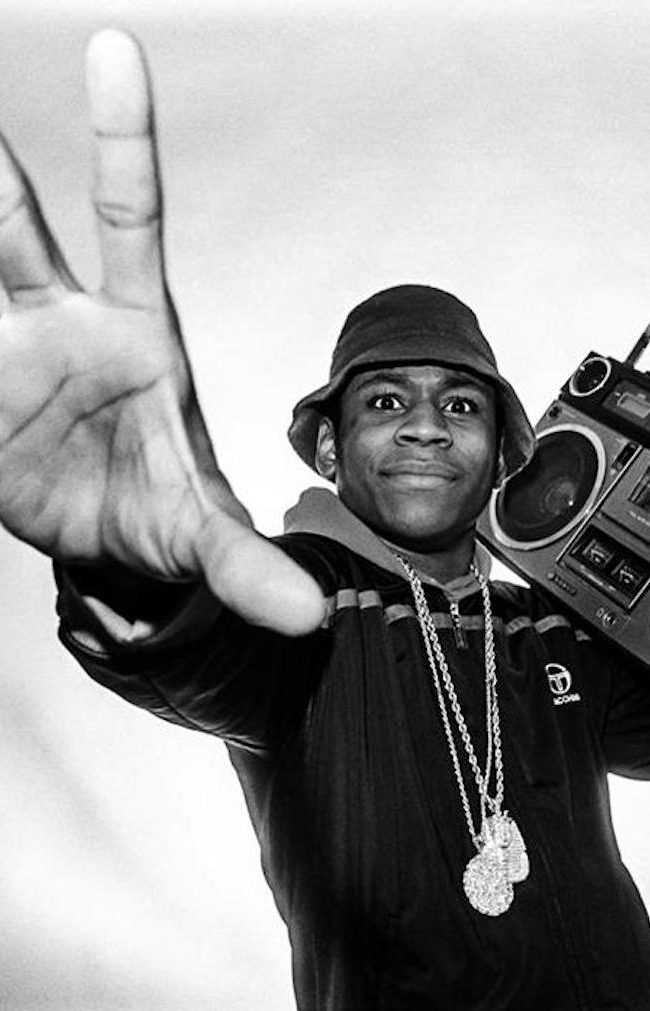
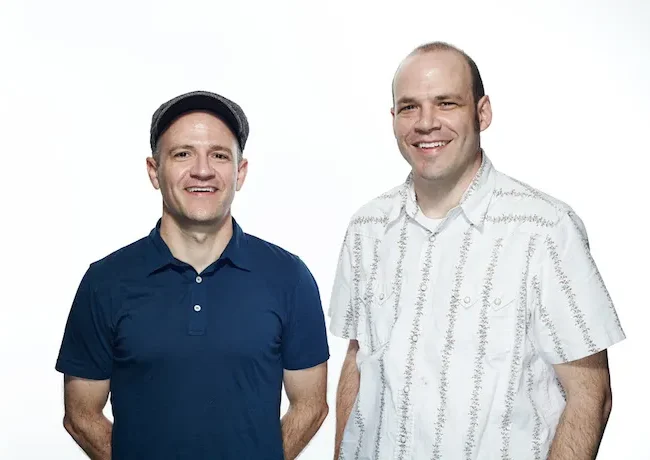


Ziva
So proud of u my sweet Almale
Pingback: HOME VIDEO PICKS – Hammer to Nail
thebuoyarchives.blogspot.com
I love this:
“Back then, I don’t think I really knew what intimacy was, but during the
making of this film, I understood that I didn’t want to steal anything
from these people. I wanted to reach a state of intimacy with them that
was genuine and to be honest about what I wanted to do. Although
neither did I want to completely ruin the magic of discovering things
together by explaining too much. The trust and intimacy was a process
and the friendships grew as I continued to film with them. We would do
creative things together or I would help them out with certain things.
It was really special. But saying that reduces the process, somehow,
since I’m sure most documentary filmmakers experience that in one way or
another. But I think doing those creative things together gave them
insight into what I was trying to do, making me less “the enemy behind
the camera” who was trying to steal things from them, and more like a
collaborator.”
Burton Falk
One of the most interesting and intelligent interviews I’ve ever read. Wow!
Was wondering if you know Marisa Silver, author of The God of War, the story, set in Bombay Beach, about a family similar to the Parrishes?